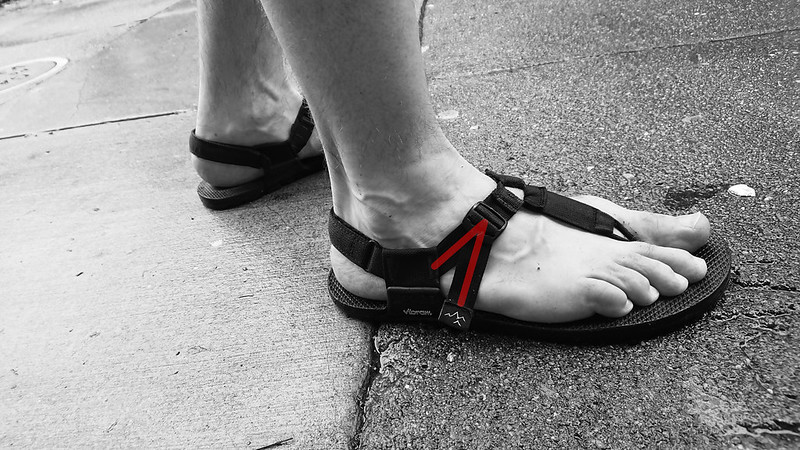Back in December I wrote that I was very happy with the Harambe resistance bands but intended to keep using the X3 bar and plate.
That last part didn’t age well.
In March I bought the Harambe CyberPlate. This was great and lived up to the hype. Encouraged by that, about a month later I bought the bar-previously-known-as-Manhattan and rods and black ropes. This too proved to be a significant quality improvement over my previous equipment. Two months after that I was back for the blue ropes and foam block.

My original Harambe purchase of the bands is, I think, still the most valuable. The reduced length of the bands and the intelligent assortment compared to what I’ve used previously directly contributes to a better, more efficient workout. The other components of the system, when compared to the X3 equivalents, are less about improving efficiency or functionality and more just quality of life improvements.
The rollers on the unfortunately named CyberPlate do make all the movements much smoother. After experiencing it, I find it hard to go back to a plate without rollers. But I do not think the that CyberPlate lets me lift heavier bands, or build more muscle faster, or anything like that. It should increase the service life of the bands, but that’s not much of an argument when one considers the price of bands compared to the price of the plate.
The bar is similar. I appreciate the greater width. I have come to prefer its independent bearings, rather than the X3 bar’s approach of having both sides move in unison. My deadlifting calluses have mostly gone away, despite the fact that I’ve progressed to heavier bands than what I was lifting when I was still using the X3 bar. (Partly this is because I’m using heavy enough bands that most of the time I need to use straps, but mostly I think it is because of the better knurling on the Harambe bar.) But, like the plate, this is more on the order of quality-of-life improvements rather than the Harambe bar being somehow more effective. The one exception is that on some movements – overhead press being the main one – I do notice my abdominal muscles being hit much more than they ever were with the X3 bar. I suspect this is due to the greater width of the Harambe bar and the independent bearings both requiring greater stabilization efforts on my part. I appreciate this. A strong core is important, and I hate doing sit-ups.
The sling system that Harambe uses offers some functional advantages over the hooks of the X3. The ability to change rope lengths and add spacers can help with progressive overload, but I feel like that advantage is pretty minor – especially if you get their orange band, which mostly replaces the contribution of the spacers in helping to progress to heavier bands. (Did I mention that I also ended up buying the orange and black bands at different points? I regularly use all six bands – individually or in some combination – for different movements.) The only area where I really take advantage of the modularity of the slings is when I put on the blue ropes, which allows me to back squat with a doubled band. I like doing back squats, but I do them after front squats. If I could only do front squats, I’d still be happy. So I don’t think the hooks vs sling question is worth spending much time thinking about. Both are fine, slings offer greater modularity, hooks provide a built-in stand, but ultimately it probably just comes down to personal preference.
If I’m home and bored and have a few minutes, I often find myself pulling the Harambe bar and plate out from their home under my desk and doing some exercise for a few minutes (this in addition to my more structured daily workouts with the system, which usually happens in the evening). I never did this impromptu work with the X3. I’m willing to accept that the responsibility for this failure lies more with me than the X3, but I think it also speaks to the difference in the experience of using both systems. When I get on the plate, grip the bar, and start pushing or pulling, it just feels like I am using well-made, top quality, professional equipment. Because I am.
All of these components cost a good deal of money (after my third order I made the mistake of asking ledger for my total spend with Harambe). Yet I don’t find myself regretting any of the purchases, and I think I would happily purchase all of them again (despite recent price increases meaning that most components are now more expensive than what I originally paid). That’s usually a good metric to assess an item’s value. But of course part of the point with a machine like this is that except for the bands, which are ultimately consumable, I should never have to purchase any sort of muscle building equipment again. I’m set for life.
I’ve noticed Harambe start to use the word “luxury” in some of their marketing. While I think that word does not properly apply to what they’re doing – “premium” would be more appropriate in the official lexicon – it implies a basic strategy to differentiate themselves from their competition that I agree with: their product is expensive, it may not complete the task more efficiently than more affordable offerings (except for the bands), but the extra thought and polish that goes into their components do craft a superior user experience, and once you use it everything else will seem less than.
The disadvantage to all this is that my shirts and jackets are all shrinking and I don’t want to replace them.






